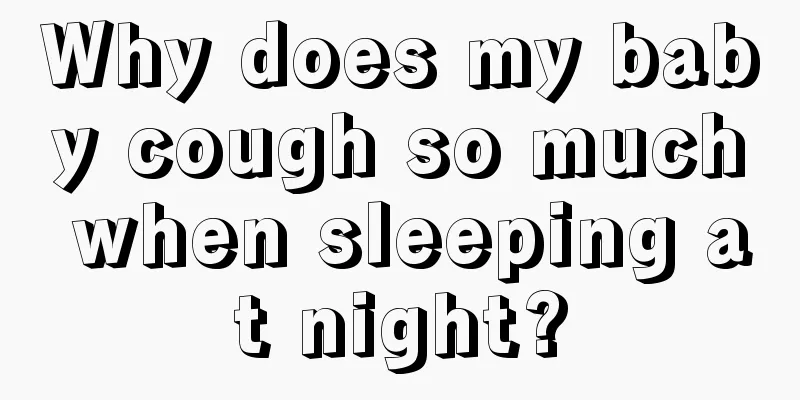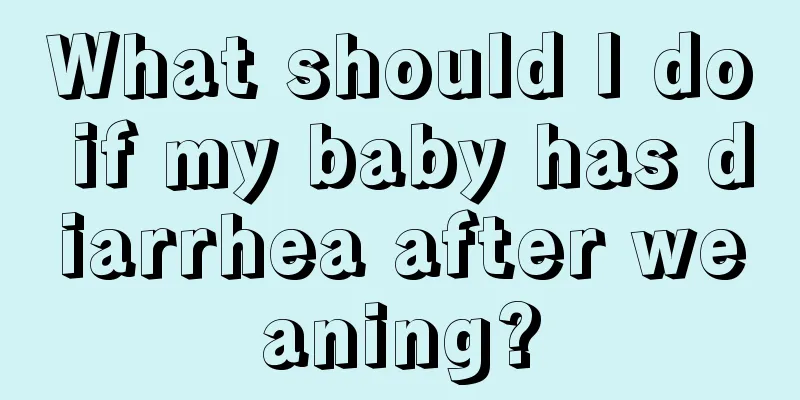What to do if your child's nose is blocked

|
Parents need to pay attention to their children's health at all times. Children at this age are relatively fragile and are prone to some diseases, especially some infectious diseases. Because children's body resistance is relatively poor, they often go to places where there are many infectious diseases and are easily infected. Therefore, parents must provide comprehensive protection for their children. So why does a child have a stuffy nose? It is usually caused by a cold, and there are some good ways to improve it. What to do if your child's nose is stuffy: Because the baby's body temperature regulation center is not fully developed, the nasal mucosa is tender and weak, and the respiratory tract defense is poor, it is easy to catch a cold. Subsequently, acute edema of the nasal mucosa occurs, causing nasal congestion. Symptoms: nasal congestion and runny nose, slightly red sides of the nose, and sometimes accompanied by fever. Prevention and control measures: 1. About half a month after the baby is born, start to supplement cod liver oil in moderation; start to add complementary foods at 4 months and supplement vitamin A. You can feed some liver puree, carrot puree, and vegetable puree to enhance the defense ability of the respiratory tract. 2. When using air conditioning, the temperature difference between indoor and outdoor should not be too large. The baby's room should be around 28 to 30 degrees Celsius. 3. Use a warm, wet towel to apply heat to the baby's nose (not too hot), twice a day, each time for about 15 minutes. Acute sinusitis nasal congestion Repeated upper respiratory tract infections in babies can affect the sinus mucosa, causing it to become congested and swollen, with increased secretions, which can block the sinus openings and cause acute sinusitis. Symptoms: In addition to nasal symptoms such as nasal congestion, runny nose, and mouth breathing, more serious symptoms include fever, headache, sore throat, and irritability. Prevention and control measures: 1. If your baby has a cold, you should actively seek treatment. 2. Once your baby has acute sinusitis, take him to an ENT doctor in time and choose antibiotics reasonably under the doctor's guidance to completely cure the disease and prevent recurrence. 3. If the baby has severe nasal congestion, you can use 0.5% ephedrine furacillin drops cautiously under the guidance of a doctor, one drop in each nostril 10 to 15 minutes before feeding, and it will usually take effect within a few minutes. However, ephedrine has side effects on babies and is not suitable for excessive or long-term use, so as to avoid causing atrophic rhinitis and affecting the olfactory sensitivity of the nose. 4. When your baby has a lot of purulent nasal discharge, you can ask the doctor to do replacement therapy to clear out the purulent secretions in the sinuses. The above methods are a good choice to improve children's stuffy nose. However, parents should also pay attention to the problem of stuffy nose for babies of a few months old. At this time, babies are not very expressive, so parents should judge by the baby's expression and complexion, which is very helpful to improve the baby's stuffy nose. |
<<: What to do if your baby's nose is blocked
>>: Common causes of impetigo in children
Recommend
Why do babies get thrush?
There are many reasons for thrush in babies. For ...
What anti-inflammatory medicine is better for children with cough
Every family should have an emergency medicine ki...
The baby had red stool after eating dragon fruit
If the baby has red stool after eating pitaya, pa...
Is it really good to bathe newborn babies frequently?
Many families nowadays have only one child, so th...
Children's hair style
I have a beautiful little girl at home. As a moth...
Child vomits in the middle of the night
Many children are prone to vomiting in the middle...
What to do if your child has a poor physique
For parents, children can be said to occupy a lar...
What causes jelly-like mucus in babies?
When a baby's stool is jelly-like and mucus-l...
Nine-month-old baby recipes and steps
Today, the editor will lead you to understand the...
What to do when your child is weaned from milk
Therefore, when a baby comes into this world from...
Children's foot turning inward
It is common for newborns to have clubfoot, and i...
What are the reasons why children have poor sleep?
The baby's poor sleep is a headache for many ...
What should I do if my 18-month-old baby is zinc deficient?
If your 18-month-old baby is zinc deficient, you ...
The best age for phimosis surgery in children
Generally speaking, phimosis surgery can be perfo...
Causes of convulsions in children's sleep
Every parent hopes that their children can stay h...









